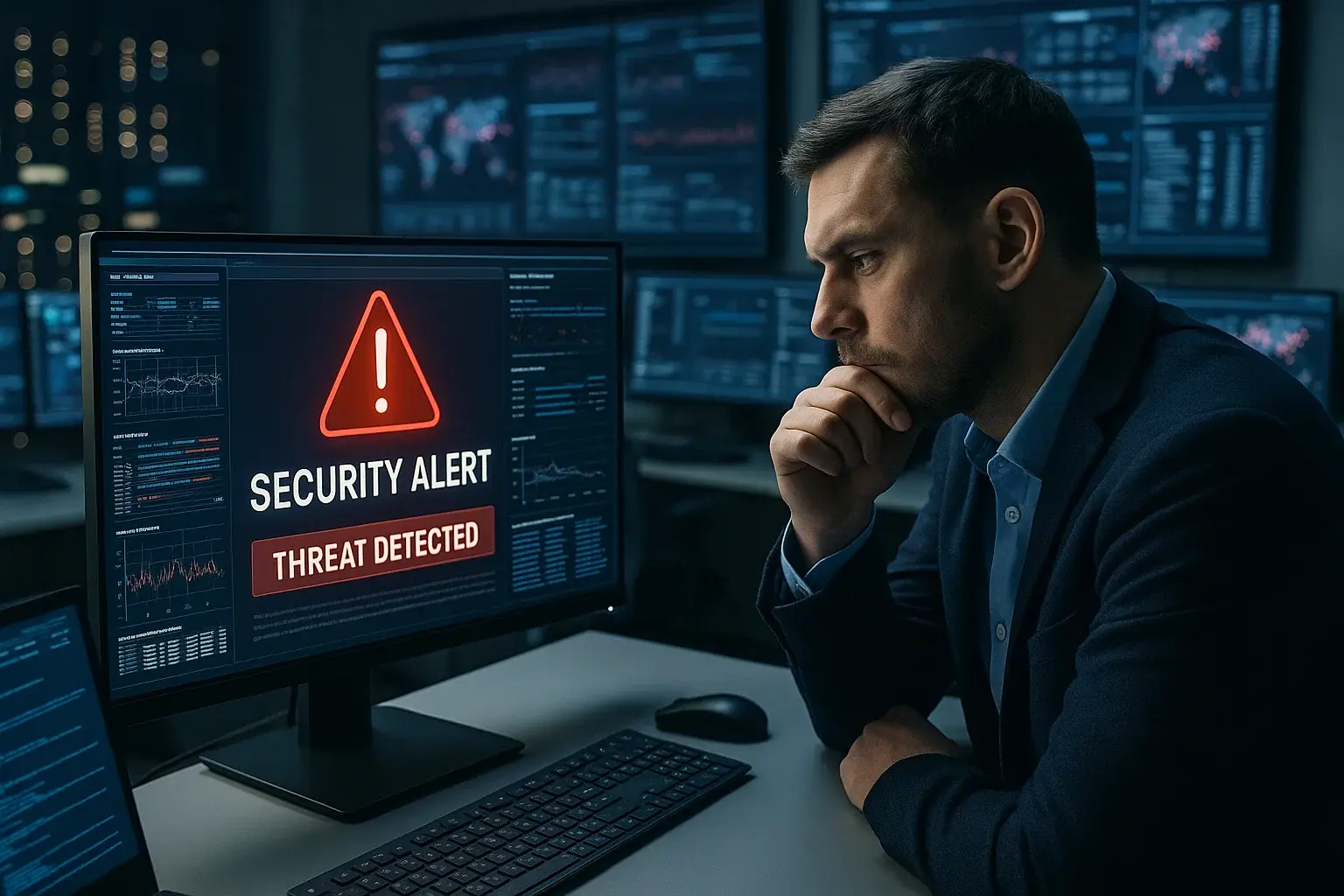When you invest millions in detection tools, it’s easy to assume your first line of defense is well covered. And yes, most companies today use between six and eight different solutions to detect threats.
But in practice, many organizations don’t balance that investment: they pour resources into cutting-edge technology and neglect their Security Operations Center (SOC).
The result? A dangerous imbalance: advanced detection tools paired with an underfunded, overwhelmed SOC that lacks the capacity to investigate properly.
When detections fail, your SOC is the only barrier left.
At TecnetOne, we see it again and again: companies believe they’re “protected” because they’ve bought top-tier tech—yet overlook the human and operational factor that actually sustains their security.
This article explains why your SOC matters more than ever, how to avoid falling for the “false shield” trap, and what to rethink before 2026 arrives.
A Real Case: Eight Tools Failed—But the SOC Didn’t
A recent investigation analyzed a sophisticated phishing attack targeting high-level executives across multiple companies.
The finding?
Eight different email security tools failed in the exact same way, letting the malicious emails land in the executives’ inboxes.
But here’s what mattered more:
Every SOC involved spotted the attack quickly—thanks to employee reports and contextual analysis by the team.
It wasn’t the technology. It was the human team. It was the SOC.
So here’s the critical question:
Why can tools fail identically, while your SOC still stops the threat?
Read more: Guide to Choosing the Ideal SOC for Your Business
Tools and SOC: Two Worlds Running in Parallel
To understand that, you need to grasp a basic truth: your tools and your SOC live in different universes.
Tools operate in milliseconds
They have to decide fast.
They can’t pause.
They can’t analyze context.
They just act on surface signals.
Their job is speed: block, allow, or alert.
Your SOC works with time, context, and the full picture
Your team can do what tools never can:
- Analyze anomalies (“Why is this exec showing an IP from a data center instead of Monterrey?”)
- Correlate across multiple tools
- Spot patterns that only make sense when you zoom out
Tools see trees.
The SOC sees the forest.
But when the SOC is underfunded, overworked, or ignored, that wider vision disappears.
Three Critical Risks of a Weak SOC
Your leadership thinks the problem is solved
Because you invested heavily in tech, leadership assumes “everything’s covered.”
Meanwhile, your SOC is drowning in alerts.
That disconnect makes it nearly impossible to justify more investment.
You’re flooded with alerts—and can’t process them
Your tools generate thousands of alerts daily, and a small SOC can’t keep up.
Analysts burn out, miss key signals, and attacks slip through undetected.
You lose the ability to spot advanced threats
The attacks that hurt the most are subtle, complex, and require investigation.
If your SOC is overwhelmed, you’ll never detect what truly matters.
The Common Mistake: Hiring More People or Outsourcing
Many companies try to fix the problem by hiring a couple more analysts or outsourcing to an MSSP to “boost the SOC.”
But this doesn’t solve the imbalance.
Hiring more people?
Alert growth outpaces hiring.
It’s like trying to bail water from a sinking ship with a single bucket—while ten holes keep pouring in.
Outsourcing (MSSP or MDR)?
It helps, but comes with its own problems:
- Long-term costs
- Limited familiarity with your internal environment
- Slow responses
- Fragmented communication
You’re just moving the problem—not solving it.
You might also be interested in: What is Security Operations Center (SOC)?
The Realistic Alternative: A SOC Enhanced by AI
The strongest trend heading into 2026 is integrating AI-driven SOC platforms like Radiant Security. These systems automate triage and investigation layers.
That means your SOC can:
- Cut false positives by over 90%
- Automatically investigate every alert
- Prioritize only real incidents
- Provide detailed context like a senior analyst
- Operate 24/7—without adding headcount
For small teams, this strikes the right balance between cost, efficiency, and scalability.
At TecnetOne, we use it ourselves: AI doesn’t replace your SOC—it empowers it.
Two Reasons SOC Investment Delivers Immediate ROI
You get the full value from your existing tools
If your SOC can’t process alerts, you’re wasting your detection investment.
You’re not using what you already paid for.
Your SOC is your only hope when tools fail
Modern (and future) attacks are designed to bypass automated detection.
That’s when your SOC becomes irreplaceable—only they can connect the dots and see the whole picture.
Three Budget Questions to Ask Yourself Before 2026
- Is my security investment balanced?
If you have more alerts than your team can handle, it’s not. - Could my SOC stop an attack if all tools failed?
That’s the true litmus test. - Am I wasting tool value because no one has time to investigate?
If your SOC can’t catch up, your tools are just shelfware.
Conclusion: Your SOC Is Your Lifeline When Everything Else Fails
Your tools detect. Your SOC interprets.
Tools react. Your SOC understands.
Tools isolate. Your SOC connects.
If 2026 will be the year attackers use AI as their primary weapon, then it must also be the year you put your SOC at the core of your defense strategy.
At TecnetOne, we always say: Detection protects you most of the time. Your SOC saves you when it really counts. And in cybersecurity, that difference is what prevents disaster.


